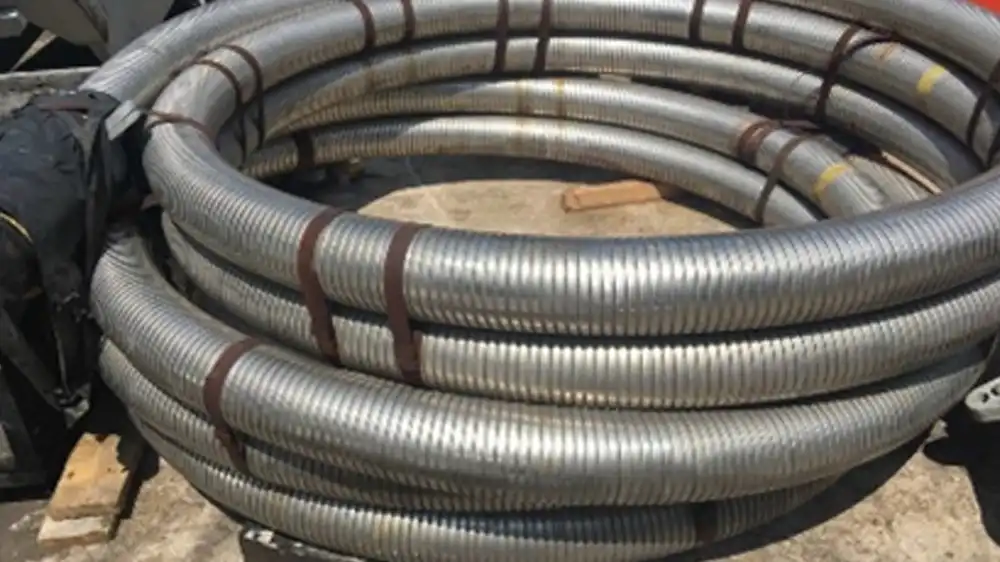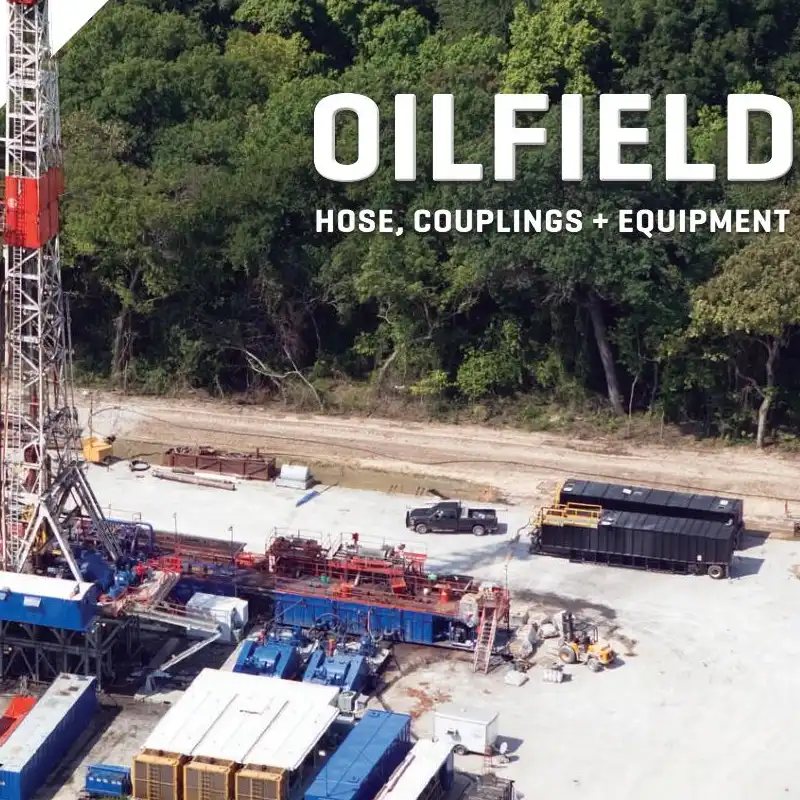Oilfield operations are a critical part of the global energy infrastructure, and the equipment used in these environments plays a crucial role in ensuring the safe and efficient extraction, processing, and transportation of oil and gas. One of the most essential components in oilfield operations is the oilfield hose.
What is an Oilfield Hose

An oilfield hose is a specialized type of industrial hose designed to withstand the demanding conditions and high-pressure requirements of the oil and gas industry. These hoses are used to transport a variety of fluids, gases, and slurries, including crude oil, natural gas, drilling mud, and hydraulic fluids, among others.
Oilfield Hose Structure
Here is the what oilfield constructed
Inner Tube:
- The innermost layer of the hose, which comes into direct contact with the fluid or gas being transported.
- Made of materials like rubber, thermoplastic, or specialty polymers that are compatible with the media flowing through the hose.
- Provides a smooth, abrasion-resistant surface to facilitate the flow of fluids and gases.
Reinforcement Layers:
One or more layers of reinforcement materials, such as:
- Wire braid: Provides high-pressure resistance and burst strength.
- Textile reinforcement: Offers flexibility, kink resistance, and tensile strength.
- Spiral-wound reinforcement: Enhances resistance to twisting and kinking.
These layers are strategically placed between the inner tube and the outer cover to enhance the hose’s overall strength and durability.
Outer Cover:
- The outermost layer of the hose, which protects the inner components from external damage, weathering, and environmental factors.
- Made of materials like rubber, thermoplastic, or specialized coatings that offer resistance to abrasion, chemicals, and UV exposure.
- Provides a protective barrier against the harsh conditions encountered in oilfield environments.
Couplings and Fittings:
- Specialized connectors used to attach the hose to various pieces of equipment, such as pumps, valves, or manifolds.
- Designed to withstand high pressures and provide secure, leak-proof connections.
- May be made of materials like steel, brass, or specialized alloys to ensure compatibility and durability.
Importance of Oilfield Hoses
Oilfield hoses play a critical role in the overall efficiency and safety of oilfield operations. Here are some of the key reasons why oilfield hoses are so important:
- Fluid and Gas Transport: Oilfield hoses are the primary means of transporting the various fluids and gases involved in oil and gas extraction, processing, and transportation. They connect different pieces of equipment, allowing the seamless flow of these critical materials.
- High-Pressure Capabilities: Oilfield hoses are designed to withstand the high pressures associated with oilfield operations, ensuring the safe and reliable transport of fluids and gases under these demanding conditions.
- Durability and Reliability: Oilfield hoses are built to withstand the harsh environmental conditions, abrasive materials, and frequent use encountered in oilfield settings. Their durability and reliability are essential for maintaining continuous operations and minimizing downtime.
- Safety Considerations: Oilfield hoses are designed with safety in mind, incorporating features such as burst-resistant construction and secure coupling systems to prevent leaks, ruptures, or other failures that could lead to dangerous situations or environmental incidents.
- Operational Efficiency: The efficient and reliable performance of oilfield hoses contributes to the overall productivity and cost-effectiveness of oilfield operations, as they help to minimize downtime, reduce maintenance requirements, and ensure the smooth flow of materials throughout the production process.
Oilfield Hose Applications
Oilfield hoses have a wide range of applications in the oil and gas industry. Here are some of the key applications of oilfield hoses:
Drilling Operations:
- Mud hoses: Transport drilling mud, a critical fluid used to lubricate and cool the drill bit, as well as to remove cuttings from the wellbore.
- Cement hoses: Used to pump cement slurry during the well casing and cementing process.
- Choke and kill hoses: Facilitate the controlled flow of fluids during well control operations.
Hydraulic Fracturing (Fracking):
- High-pressure hoses: Convey the high-pressure fracturing fluids and proppants used to stimulate oil and gas production from shale formations.
- Blender hoses: Transport the various chemical additives and water used in the fracking fluid mixture.
Well Servicing and Workover:
- Coiled tubing hoses: Deliver fluids and gases for well interventions, such as cleanouts, acidizing, or stimulation treatments.
- Wireline hoses: Provide a conduit for wireline tools and equipment during well logging, perforating, and other downhole operations.
Production and Processing:
- Flow lines: Transport crude oil, natural gas, and associated fluids from the wellhead to processing facilities.
- Gathering hoses: Connect individual wells to the main gathering system.
- Transfer hoses: Used to load and unload fluids at storage tanks, terminals, and pipeline connections.
Transportation and Distribution:
- Loading and unloading hoses: Facilitate the transfer of oil, gas, and refined products during truck, rail, and marine loading and unloading operations.
- Pipeline maintenance hoses: Used for pigging, cleaning, and other pipeline maintenance activities.
Specialty Applications:
- Cryogenic hoses: Transport liquefied natural gas (LNG) and other cryogenic fluids.
- Abrasion-resistant hoses: Used in applications with high levels of particulate matter, such as sand or gravel.
- Fire-resistant hoses: Protect in the event of a fire or high-heat exposure.
The diverse range of oilfield hose applications highlights their critical role in supporting the various stages of oil and gas exploration, production, and distribution. The specific hose requirements, such as pressure ratings, material compatibility, and environmental resistance, are carefully matched to the unique needs of each application to ensure safe and reliable performance.
Conclusion
Oilfield hoses are a critical component of the oil and gas industry, playing a vital role in the extraction, processing, and transportation of vital resources.
By understanding the importance of these specialized hoses and adhering to best practices for their handling and maintenance, oilfield operators can ensure the continued safe and efficient operation of their facilities, contributing to the overall success and sustainability of the industry.


